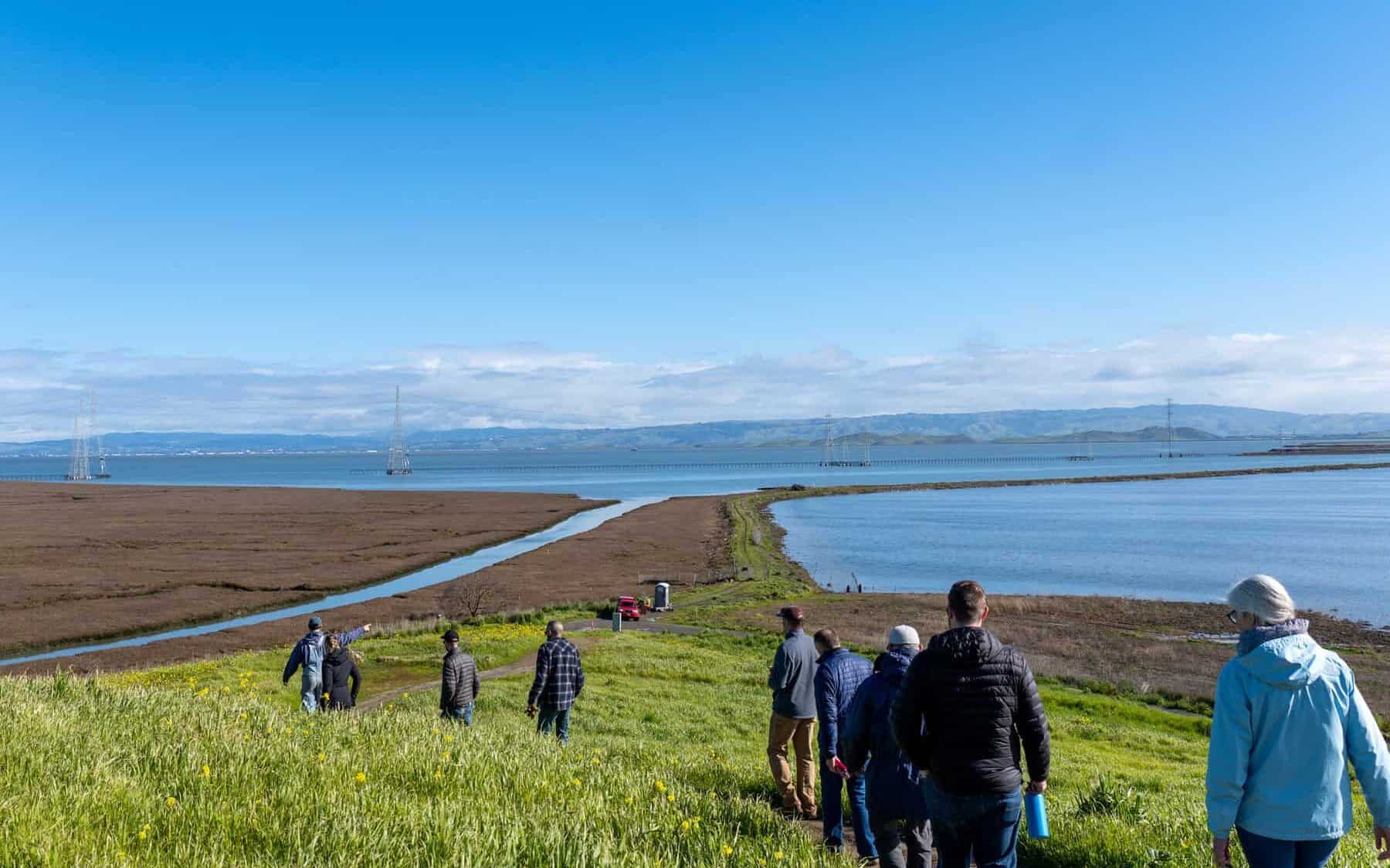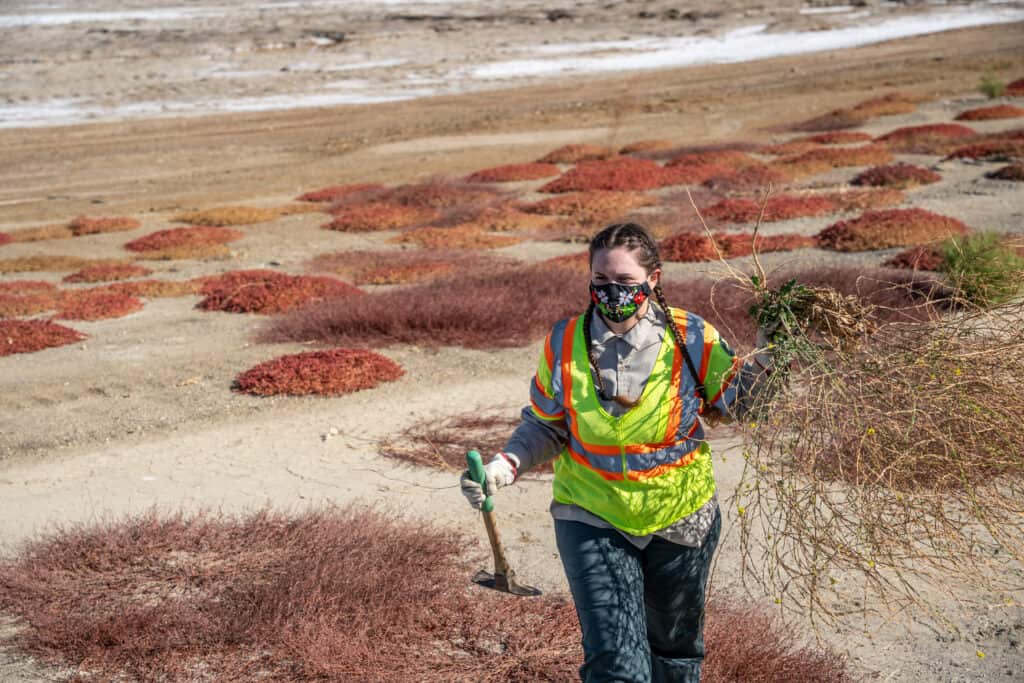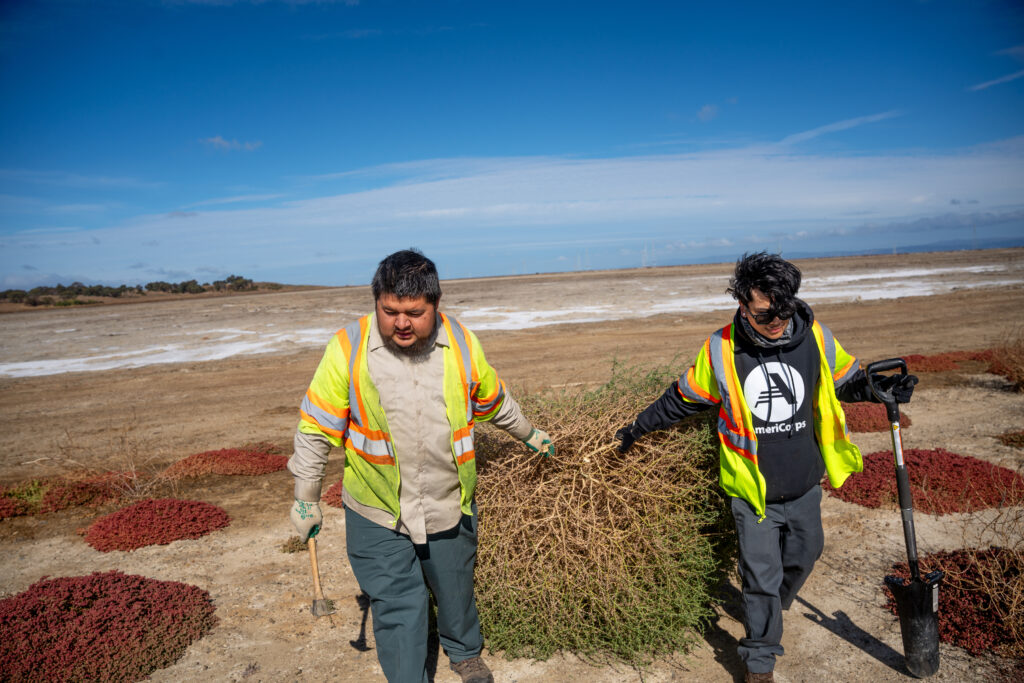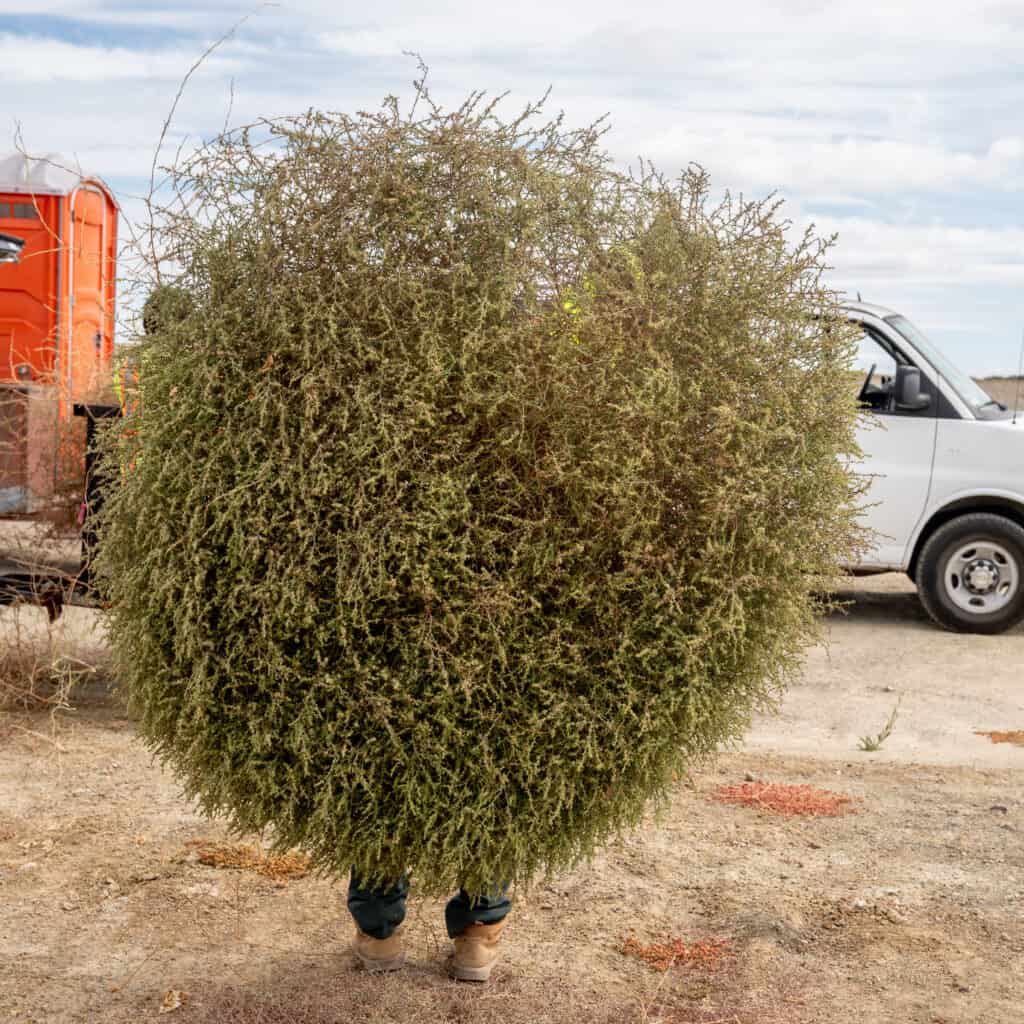Save The Bay is excited to announce our biggest restoration project yet: the All-American Canal (AAC)! Our Habitat Restoration Team (HRT) has been working hard alongside partners to start the process of revegetating the All-American Canal, a 16-acre slope of tidal marsh in the Peninsula. The project is the second phase of a 25-acre slope restoration plan at Bedwell Bayfront Park. Save The Bay successfully completed the first phase in 2021 when we restored 9 acres at the Ravenswood R4 levee section of the Canal.
The AAC is a part of South Bay Salt Pond Restoration Project, the biggest wetland restoration plan on the West Coast. The goal is to turn 15,000 acres of industrial salt ponds to flourishing tidal wetlands that support the Bay’s wildlife. Further, the project will directly impact shoreline communities and Bay Area residents by aiding in sequestering greenhouse gases, mitigating sea level rise and storm surges, and promoting a healthy and beautiful bay.

What We’re Doing
Our team primarily focuses on revegetating the wetland-upland transition zone of tidal marshes, where the tide meets the land. This area is a unique and important ecotone, where two habitats interconnect and their biological communities interact. Wetland transition zone ecotones in particular are home to a wide variety of plant, animal, fish and bird species that depend on healthy wetlands for survival.
The previously restored 9-acre project at the Ravenswood R4 levee was the first time HRT experimented with mechanical and farming techniques to vegetate the slope at such a large scale. This successful and efficient farming approach will be used for the rest of the 16 acres at the All-American Canal, allowing for a quicker restoration process.
Your Support Matters
Save The Bay is working hard, taking on our biggest restoration project yet and ensuring Bay Area communities are resilient to climate change. But we need donors like you to make our work possible. When you give, you directly support projects like the All-American Canal.
The Restoration Process



To prepare the site, we worked alongside San Jose Conservation Corps (SJCC) to weed invasive plants from the area. Throughout the process, HRT and SJCC removed over 4 tons of non-native invasives from the Ravenswood AAC & Nesting Island! Our team, SJCC, and our super volunteers are currently prepping the remaining acres of the AAC and employing 3 different methods to revegetate the site:
- We will dig up and chop the roots of rhizomatous plant material grown in our raised bed nursery into sod chunks. Once the slope is fully weeded and cleared of invasive plants, we will lay thousands of sod chunks along the site. Then, a farmer will mechanically disc the sod directly into the soil. This will allow plant rhizomes to take hold underground and spread through the rainy season.
- After the discing is completed over the course of one week, we will spread an annual seed mix produced by Hedgerow Farms throughout the slope. This specific native annual mix will establish on bare ground quickly and discourage invasive plant growth.
- To further protect the area, we are planning diversity and refuge patches in carefully measured locations to create biodiversity hotspots across the length of the slope. The diversity patches are pieces of sod that will be directly planted into the ground to account for plants that are less tolerant of the stressful, mechanized planting process of discing. The refuge patches will be planted in clusters using container plants from our nurseries along the water to form dense and biodiverse refugia for wildlife during high tide and king tide events. Throughout the spring and summer, we will provide supplemental irrigation to the area and continue to weed invasive plants.
Thank You

Thank you to our partners for continuing to assist us in our largest project yet: San Jose Conservation Corps, Ducks Unlimited, West Bay Sanitary District, USFWS, State Coastal Conservancy, and South Bay Salt Pond Restoration Project. If you want to be a part of our journey to restore the All-American Canal for the environment and the community, join us in December for a volunteer planting day at our Ravenswood site adjacent to the project and help our wetlands grow. Or you can donate to Save The Bay today or this Giving Tuesday, November 29, to support this vital work.

















































